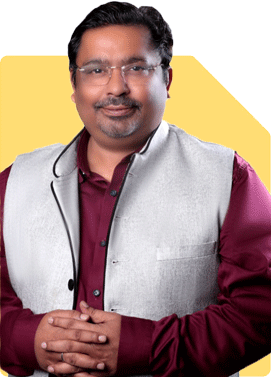Hi money guru, im investing 30k sip in below funds can you please look into these and suggest if any changes need for better growth, my target is for retirement in 10 years with high returns i can take risk as im 33 years old now, and i would like to invest for mi kids in one fund as well with another 5ksip, please suggest
My funds
Nippon small cap 6k
Quant mid cap 6k
Hdfc mid cap 6k
Axis small cap 6k
Paragh parik flexi cap 6k
Please help me if any changes required for high returns
Thanks
Ans: It’s commendable that you are investing Rs 30,000 per month in SIPs for your retirement. At age 33, you have a significant investment horizon, which allows for a higher risk appetite and potential for high returns. Let’s evaluate your current investments and suggest any necessary changes for better growth.
Current Investments
Your portfolio currently includes:
Nippon Small Cap: Rs 6,000
Quant Mid Cap: Rs 6,000
HDFC Mid Cap: Rs 6,000
Axis Small Cap: Rs 6,000
Parag Parikh Flexi Cap: Rs 6,000
Evaluation of Current Funds
Small Cap Funds: You have significant exposure to small-cap funds (Nippon and Axis Small Cap). These funds have high growth potential but also come with higher volatility and risk.
Mid Cap Funds: The allocation to mid-cap funds (Quant and HDFC Mid Cap) provides a balance between risk and return, with potential for substantial growth.
Flexi Cap Fund: Parag Parikh Flexi Cap offers diversification across market capitalizations, providing stability and growth potential.
Suggested Changes for Better Growth
Diversify Further: Your portfolio is heavily weighted towards small and mid-cap funds. Consider adding a large-cap fund to reduce volatility and provide stability.
Balanced Allocation: Aim for a mix of large-cap, mid-cap, and small-cap funds. This strategy balances risk and return effectively.
Reduce Overlap: Ensure that your funds do not have significant overlap in stock holdings. Diversified holdings reduce risk.
Recommended Portfolio Structure
Large Cap Fund: Allocate a portion to a large-cap fund for stability. Large-cap funds invest in established companies, offering steady returns.
Mid Cap Fund: Retain one or two mid-cap funds. They provide a good balance between growth and risk.
Small Cap Fund: Maintain a small portion in small-cap funds for high growth potential. However, avoid over-exposure to reduce risk.
Flexi Cap Fund: Keep the Parag Parikh Flexi Cap for its diversified approach.
Suggested Allocation
Large Cap Fund: Rs 6,000
Mid Cap Fund: Rs 6,000 (retain one existing fund)
Small Cap Fund: Rs 6,000 (retain one existing fund)
Flexi Cap Fund: Rs 6,000 (retain existing)
Balanced Fund or Multi-Cap Fund: Rs 6,000 (new addition)
Investing for Your Child
For your child’s future, consider a dedicated investment fund. A balanced or child-specific mutual fund can be ideal. These funds offer a mix of equity and debt, ensuring growth with reduced volatility.
Recommended Fund for Child
Child-Specific Fund or Balanced Fund: Rs 5,000 per month. These funds are designed to grow steadily while ensuring capital protection.
Importance of Regular Reviews
Periodic Review: Regularly review your investments to ensure they align with your financial goals and risk tolerance. Market conditions change, and periodic reviews help in making necessary adjustments.
Rebalancing Portfolio: Rebalance your portfolio periodically to maintain the desired asset allocation. This helps in managing risk and optimizing returns.
Benefits of Actively Managed Funds
Actively managed funds offer the potential for higher returns as fund managers make strategic decisions to outperform the market. While index funds provide average market returns, actively managed funds aim to exceed them.
Disadvantages of Direct Funds
Direct funds have lower costs but lack professional guidance. Investing through a Mutual Fund Distributor (MFD) with a CFP credential ensures expert advice and tailored investment strategies.
Conclusion
Your current portfolio has a strong foundation, but it can benefit from further diversification and balanced allocation. Adding a large-cap fund and a balanced fund will reduce volatility and provide steady growth. For your child’s investment, a dedicated child-specific or balanced fund is recommended. Regular reviews and rebalancing will ensure your portfolio remains aligned with your financial goals.
Best Regards,
K. Ramalingam, MBA, CFP,
Chief Financial Planner,
www.holisticinvestment.in



























